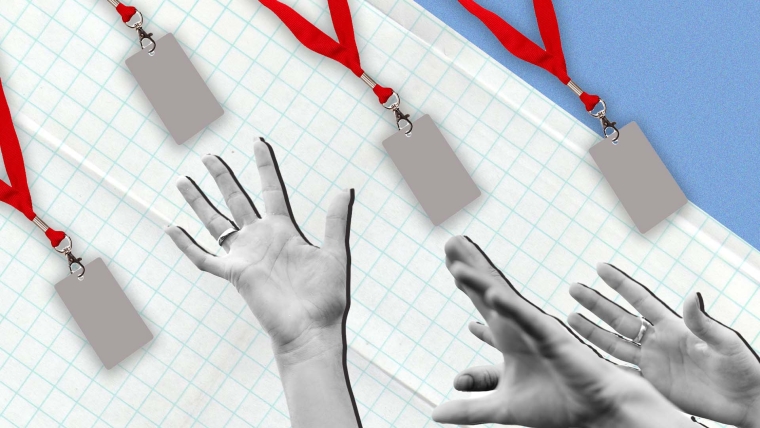
New Zealand’s jobless rate hit a five-year high in June, rising from 5.1% to 5.2% as thousands of young people chose not to enter the workforce and instead stay in education.
Statistics New Zealand said unemployment was up 11.1% at 158,000 people in the year to June, with an additional 16,000 searching for a job.
Jason Attewell, a labour market spokesperson, said market conditions had changed considerably in the last few years. Since June 2022, the unemployment rate has risen 1.9 percentage points and the underutilisation rate 3.5 points.
Underutilisation includes both people looking for work and those wanting more hours, as a percentage of the potential workforce.
It rose to 12.8% to include 403,000 workers in the June quarter, up 7.7% in the year — this is the highest rate since September 2020, following covid lockdowns.
Auckland recorded the highest unemployment rate at 6.1%, while Otago had the lowest at just 3%. The South Island has outperformed the North, helped by its agricultural economy.
While the headline unemployment rate was slightly lower than some economists expected, it was driven by 2,000 job losses and zero growth in the labour force.
The working age population grew by 13,000 or 0.3% in the June quarter but none of this growth flowed through to the labour force which was unchanged at 3 million workers.
This pushed the labour force participation rate down 0.2 points to 70.5% and and the employment rate—which itself is a percentage of the labour force—also down 0.2 points to 66.8%.
Participation peaked at 72.4% in June 2023, driven by new migrant workers and the high cost of living prompting more households to seek extra income.
It has been falling ever since, as high interest rates have cooled inflation and reduced job opportunities. This has encouraged many would-be workers to shift overseas or stay in education for longer.
As a rough illustration: If participation were still at its record high, with the same number of people employed as today, the unemployment rate would be closer to 7%.
People choosing not to seek work, or to shift to Australia, acts as a pressure valve for the labour market and prevents the unemployment rate from climbing too high.
Attewell said the increase in the number of young people in education matched the decreases in the youth employment rate and the labour force participation rate.
The number of people aged 15 to 24 in education rose 18,000 people over the year to June, a 5% increase from the previous year. These mostly came from those not in the labour force.
“Although youth engagement in both education and employment looks rather different compared with 2024, the rate of youth not in employment, education or training remained similar,” he said.
Job losses have been concentrated among young people. The unemployment rate for those aged 20 to 24 was 9.8% and the underutilisation rate was 21.4%.
Kelly Eckhold, chief economist at Westpac, said this was an “echo of the post-Covid boom”, when many young people were pulled from education into the workforce after the pandemic.
“As the economy cooled off, this group has found themselves out of work again or are struggling to get into work in the first place,” he said, in a note published before the data release.
The weak job market has kept wage growth subdued. Stats NZ said the Labour Cost Index, which tracks pay in a fixed set of roles, rose 2.4% in the year to June — lagging consumer price inflation at 2.7%.
Average weekly earnings for full-time employees rose 4.1% to $1,678. This broader measure includes pay gains from job changes, promotions, and extra hours. Hourly pay rose 4.5% to $43.39.
Boom and bust
The national unemployment rate was last at 5.2% shortly after the first covid-19 lockdown in 2020 and at 5.3% in December 2016 when the market was still recovering from a 6.7% peak in 2012.
Joblessness fell to 3.2% at the end of 2021, driven by pandemic-era monetary and fiscal stimulus that has since been withdrawn. High interest rates pushed New Zealand into recession in late 2023, and the economy has yet to fully recover.
The RBNZ had expected unemployment to peak at 5.2% in this June quarter before gradually falling below 5% in 2026. But retail bank economists now say the subdued economic recovery may limit new hiring and push the jobless rate higher.
Miles Workman, a senior economist at ANZ, said recent high-frequency data showed a loss of economic momentum in the June quarter, increasing the risk of weak employment growth in the months ahead.
If the recovery takes too long, firms holding onto extra staff may run out of capital and cut headcount to save costs, some economists have warned.
As of Tuesday morning, financial markets were predicting the RBNZ would cut the Official Cash Rate to 2.75% by February or May next year. This data release will likely support that view.
22 Comments
400k people out of work or needing more. The true measure of the employment market. That equates roughly to the population of Christchurch.
What is underemployment I wonder? How many are counted as employed but only working a few hours a week?
Our single greatest stimulus has been targeted at those borrowing to buy investment property. What a ridiculous waste in hindsight. Yes, we needed to unwind some of Labours nonesense but we also needed dynamic economic stewardship, not to cosy up to a few vested interests.
Maybe it’s time we stop calling it “income tax” and start calling it what it really is - a Labour Levy. It penalises businesses for hiring humans and pushes them toward automation and AI. Scrap it, and they could hire more people without spending a dollar more - boosting employment, reducing welfare, and growing the economy (and tax revenue) in the process.
Business only employ more staff when it is profitable to do so because demand is increasing. If a business received a tax cut and didn't need any more staff why would you employ more people?
Businesses aren’t firing people for fun - they’re doing it because they can’t afford to keep them. Scrap the Labour Levy, and they could retain staff or even hire more - without cutting anyone’s pay or increasing costs.
Auckland unemployment at 6.1% is bad news. I fear we may be entering a period of high unemployment that may last a long time.
The government will likely need to do more to address this. It may even need a societal change of some sort. Salaries need to be rationalized. Too many being paid too much while others being paid too little.
"Too many being paid too much while others being paid too little" - you don't think supply and demand is the best way to set the price of labour, and instead the government should set salaries? Good luck with getting skilled people to stay in NZ!
I have no problem with skilled people being paid what they are worth. I was thinking more about people in nonsense jobs and management. The government's role is to stop things from taking their natural course where society becomes unlivable. That wont be through setting salaries. There's a lot governments can do to stimulate employment in other ways.
Unfortunately, government is far too involved in setting salaries (and the welfare industry who compete for bums on seats) - stuffing up supply and demand. Hence the headline "Young people are avoiding New Zealand’s weak labour market". The wage should be agreed between the employer and the worker - not some do gooder public servant who gets a thrill out of raising the minimum wage/tax on the unskilled.
How can the worker really agree with the employer about their wages? In a closed society this may work, where workers could withdraw their labour. Or in a society where labour is scarcer. With open immigration the employer could just bring in workers from other countries. With no controls employers would make employees pay them to work. This happens! This is where governments can step in. Workers need the power of the government setting minimum wages, immigration control, health and safety and so on. Labour is not a resource to be exploited. It is not a commodity. A government is required to wisely look after the welfare of the people.
Labour is not a resource to be exploited.
Government does a grand job of exploiting the bejesus out of labour to fund their pet projects. If that eased off a bit, enabling people to take home more pay, there would be more people in the workforce and/or working more hours.
How does the government exploit "the bejesus out of labour to fund their pet projects"? Not saying they don't, just wouldn't mind this claim being fleshed out a bit more.
This is still not a particularly high unemployment rate by historical standards. For example it was 6.7% in September 2012
Only surprised it's not higher. Probably offset by departures to Straya.
A lot not being reported. Two income families with one losing their job. People retiring earlier. Unemployed graduates living at home.
I have long argued that it is completely irrelevant & inequitable that a person who has likely paid taxes for decades cannot qualify for the unemployment benefit simply because of their relationship status.
Or one income of a two income family where one income goes from a full time job to a zero hour style contract with so far about 15h/week. A family household. Thank goodness the house is paid off.
Pretty sure the first and third examples are both reported - the unemployment rate is not based on benefit eligibility.
I was thinking more of people in this situation who weren't registering for some reason. Everyone interested in getting sufficient hours or seeking employment should register themselves and get into the statistics.
as thousands of young people chose not to enter the workforce and instead stay in education.
I can see a problem here with the 'education export'. International students can work up to 25 hours per week during the academic semester. If there is little chance of work, that potentially impacts their decision to study in Aotearoa. It's expensive enough as it is.
Over the ditch, Albo doesn't give a rats and is squeezing even more students in. The cynics say it's all part of a cunning plan to protect the Ponzi and swell the ranks of a cheap labor force.
Mad if you ask me. But hey, the people voted for this.
How many times has the government said "We are turning the corner" now? I think what they don't realise is that we are going down a never ending corner, like in a multi story parking building, trying to get to the bottom.

We welcome your comments below. If you are not already registered, please register to comment
Remember we welcome robust, respectful and insightful debate. We don't welcome abusive or defamatory comments and will de-register those repeatedly making such comments. Our current comment policy is here.